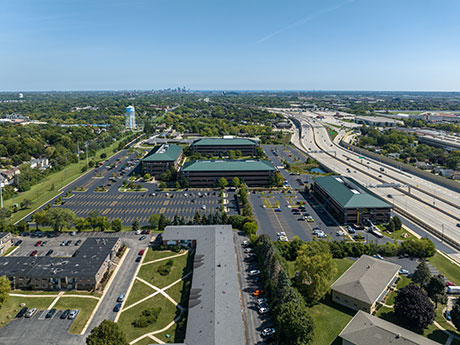By Matt Hock, NAI Greywolf
In the active landscape of Milwaukee’s commercial real estate market, several trends are reshaping the way businesses, both tenants and landlords, approach office spaces. From the enduring impact of remote work to the changing preferences of tenants, the market is currently witnessing a focus on quality, adaptability and talent retention.
Flight to quality persists
While the market continues to see the flight to quality we have experienced for the past few years, the Milwaukee office sector is now also experiencing what has been termed as “competing with the couch.” Companies are battling the challenge of bringing employees back to the office and with that they are looking to solve this issue with providing spaces that offer more than your standard office setup.

Basically, they are looking for amenities and features within the office that entice workers to come back, compared with what remote workers have with their home office setup. So, competing with the comforts of home, or the couch, in these cases. This has catalyzed a “flight to quality,” where businesses are investing in premium office spaces designed to enhance the overall employee experience.
In effort to attract and retain top talent, companies are increasingly prioritizing quality over quantity. Modern office spaces are being designed to foster collaboration, creativity and well-being. They are in essence serving as hubs that inspire productivity and innovation. From state-of-the-art amenities to sustainable design features, these spaces reflect a commitment to creating environments where employees thrive.
Downsizing, upgrading
Interestingly, as the flight to quality gains momentum, tenants are recalibrating their spatial requirements. The traditional model of leasing expansive Class B spaces is giving way to a more streamlined approach, where companies are opting for smaller footprints in premium Class A buildings. For instance, where a tenant might have previously sought a 12,000-square-foot Class B space, today they are content with an 8,000-square-foot area in a Class A property.
This trend underscores a strategic shift toward optimization and efficiency. By downsizing their physical footprint while upgrading the quality of their space, businesses can achieve cost savings without compromising on the quality of their working environment.
Such spaces not only align with the evolving needs of modern businesses but also serve as a testament to the adaptability of Milwaukee’s commercial real estate market.
Manufacturing companies
Another notable trend within the Milwaukee market is the transformation of office spaces within manufacturing companies. Traditionally, office operations staff were often situated within the confines of the manufacturing plant. However, there is a noticeable shift toward relocating these teams to more conventional office settings.
This trend is exemplified by the recent moves of prominent companies like Milwaukee Tool and MEC, who have transitioned their operations teams into purpose-built office spaces in downtown Milwaukee and Honey Creek Corporate Center, respectively. This strategic relocation not only enhances operational efficiency but also underscores a broader recognition of the importance of creating distinct work environments tailored to the needs of different functions within a company.
Looking ahead
As Milwaukee’s commercial real estate market continues to evolve, these trends are poised to shape its trajectory in the coming years. The emphasis on quality, adaptability and talent retention will remain pivotal, driving innovation and transformation across the sector.
From reimagining office spaces to redefining traditional paradigms, the market’s response to these trends reflects a commitment to staying ahead of the curve in an ever-changing business landscape.
Matt Hock is a senior advisor with NAI Greywolf. This article originally appeared in the May 2024 issue of Heartland Real Estate Business magazine.


